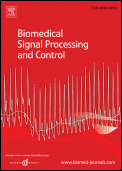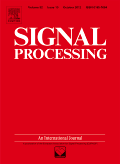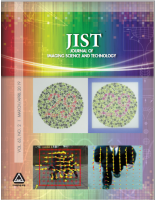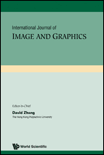
Signal Image and Video Processing
Scope & Guideline
Innovating Imaging and Video Technologies
Introduction
Aims and Scopes
- Image Processing Techniques:
The journal covers a wide range of image processing methods, including filtering, segmentation, enhancement, and restoration techniques. These methods aim to improve image quality and extract meaningful information from images. - Signal Processing Innovations:
Research in this area includes algorithm development for various signal processing applications such as audio, speech, and biomedical signals. The focus is on enhancing signal clarity and extracting relevant features. - Machine Learning and Deep Learning Applications:
A significant emphasis is placed on the application of machine learning and deep learning techniques for image and video analysis, including object detection, classification, and segmentation. - Multimodal Data Integration:
The journal explores methods for integrating data from multiple sources, such as combining visual, audio, and contextual information to improve analysis and decision-making processes. - Remote Sensing and Medical Imaging:
Research on remote sensing technologies and medical imaging techniques is prominent, focusing on applications in environmental monitoring and healthcare diagnostics. - Real-time Processing and Applications:
The journal also addresses the challenges and solutions related to real-time processing of images and video, which is critical for applications in surveillance, autonomous systems, and interactive media.
Trending and Emerging
- Machine Learning and AI Integration:
There is a significant surge in research that integrates machine learning and artificial intelligence into image and video processing applications, indicating a shift toward more adaptive and intelligent systems. - Deep Learning Architectures:
The adoption of deep learning architectures, particularly convolutional neural networks (CNNs) and transformers, is on the rise, with many papers focusing on novel applications and improvements of these models for various tasks. - Remote Sensing Innovations:
Research related to remote sensing technologies is increasingly prevalent, particularly in applications for environmental monitoring, urban planning, and disaster management. - Multimodal Processing:
Emerging research on multimodal processing techniques that combine various types of data (e.g., visual, auditory, and textual) for enhanced analysis and interpretation is gaining traction. - Real-time Processing Techniques:
There is a growing emphasis on developing algorithms and systems for real-time processing of images and videos, which is critical for applications in autonomous systems and smart surveillance. - Explainable AI in Image Processing:
As AI systems become more complex, there is an emerging focus on explainability and interpretability in image processing applications, ensuring that users can understand and trust the outcomes of AI-driven analyses.
Declining or Waning
- Traditional Signal Processing Methods:
There is a noticeable decline in the publication of papers focused on traditional signal processing techniques, as researchers increasingly adopt machine learning approaches that offer more robust and efficient solutions. - Basic Image Enhancement Techniques:
Research on fundamental image enhancement techniques, such as histogram equalization or simple filtering, seems to be decreasing, possibly due to the rise of deep learning methods that provide superior results. - Theoretical Analysis of Algorithms:
There appears to be a reduction in papers that focus solely on theoretical analyses of signal processing algorithms, with a shift towards practical implementations and applications in real-world scenarios. - Low-level Image Processing Techniques:
There is less emphasis on low-level image processing techniques, as the field moves towards higher-level applications and integrated systems that leverage complex algorithms. - Basic Pattern Recognition:
The journal has seen fewer submissions related to basic pattern recognition methodologies, as the field has evolved towards more sophisticated models that incorporate deep learning and advanced feature extraction techniques.
Similar Journals

Biomedical Signal Processing and Control
Innovating the future of biomedical engineering through research.Biomedical Signal Processing and Control is a premier academic journal published by ELSEVIER SCI LTD that stands at the forefront of the rapidly evolving fields of biomedical engineering, health informatics, and signal processing. With an impressive impact factor reflecting its scholarly influence and high standards of research, this journal has been recognized in the Q1 quartile category across multiple disciplines as of 2023. Specifically, it holds esteemed positions within Biomedical Engineering, Health Informatics, and Signal Processing, where it ranks in the top tier of its field on Scopus: #19/131, #21/138, and #47/303 respectively. Published continually from 2006 to 2024, the journal serves as a critical platform for researchers, healthcare professionals, and students, fostering innovation in signal processing techniques and their applications in biomedical systems. Access to cutting-edge research and methodologies makes it an indispensable resource for advancing knowledge and practice within these interdisciplinary domains.

MACHINE VISION AND APPLICATIONS
Advancing the Frontiers of Machine Vision Innovation.MACHINE VISION AND APPLICATIONS is a distinguished peer-reviewed journal published by SPRINGER, serving as a vital platform for innovative research in the fields of computer vision, pattern recognition, and their applications within hardware and software systems. Since its inception in 1988, the journal has been at the forefront of disseminating cutting-edge findings and advances in machine vision technologies, significantly contributing to the global academic discourse. With an impressive track record, the journal ranks in the Q2 category across various domains in the 2023 Scopus rankings, reflecting its esteemed position in Computer Science Applications, Computer Vision and Pattern Recognition, Hardware and Architecture, and Software. Although it does not currently offer open access options, MACHINE VISION AND APPLICATIONS remains a critical resource for researchers, professionals, and students eager to explore emerging trends and methodologies in the rapidly evolving landscape of machine vision.

SIGNAL PROCESSING
Unlocking the Potential of Signal AnalysisSIGNAL PROCESSING is a premier academic journal published by Elsevier, dedicated to advancing the field of signal processing. With an impressive impact factor and ranked in the Q1 category across various disciplines such as Computer Vision and Pattern Recognition, Control and Systems Engineering, Electrical and Electronic Engineering, and more, the journal stands as a highly respected resource within the academic community. Since its inception in 1979, SIGNAL PROCESSING has provided a platform for researchers and professionals to disseminate their findings on innovative algorithms, techniques, and applications related to signal analysis and processing, making significant contributions to both theoretical and practical aspects of the discipline. The journal is accessible through institutional subscriptions, ensuring that scholars and students can engage with cutting-edge research and foster advancements in technology and methodology. Readers can expect to find a wealth of articles that promote critical discourse and facilitate further research, making SIGNAL PROCESSING an essential reference for anyone involved in the fields of signal processing and related areas.

JOURNAL OF IMAGING SCIENCE AND TECHNOLOGY
Connecting Scholars in the World of ImagingJOURNAL OF IMAGING SCIENCE AND TECHNOLOGY, published by I S & T - SOC IMAGING SCIENCE TECHNOLOGY, is a pivotal resource in the realms of imaging science, optics, and materials. With its ISSN 1062-3701 and E-ISSN 1943-3522, this journal has been disseminating influential research since 1993 and continues to be a vital platform for scholars up to 2024. Despite its varied quartile rankings across disciplines—such as Q4 in Atomic and Molecular Physics and Optics, and Q3 in Chemistry (Miscellaneous) and Electronic, Optical and Magnetic Materials—it provides an essential forum for innovative ideas and advancements. The journal’s focus on interdisciplinary connections encourages collaboration among researchers in the fields of chemistry, computer science, and physics. Researchers, professionals, and students interested in exploring the latest imaging technologies and methodologies will find invaluable insights within its pages, making it a significant addition to their academic libraries.

International Journal of Image and Graphics
Advancing the Frontiers of Visual InnovationInternational Journal of Image and Graphics, published by World Scientific Publishing Co. Pte Ltd, serves as an essential platform for scholars and practitioners in the realms of Computer Graphics, Computer-Aided Design, and Computer Vision and Pattern Recognition. Established in 2001 and based in Singapore, this journal has become increasingly influential, with a reputation reflected in its Q3 and Q4 rankings across key categories in Scopus, highlighting its growing impact in the academic community. Open access options remain limited; however, the journal's commitment to disseminating high-quality research allows for a rich exchange of ideas among professionals and students alike. As the 2023 metrics indicate, contributions to the journal not only enhance individual academic portfolios but also promote advancements in image processing, fostering innovation and growth within the discipline until at least 2024. It is thus a vital resource for anyone looking to deepen their knowledge and understanding of contemporary trends and technologies in image processing and related fields.

Journal of Signal Processing Systems for Signal Image and Video Technology
Bridging the Gap Between Theory and Practice in Signal Technology.Journal of Signal Processing Systems for Signal Image and Video Technology, published by SPRINGER, is a leading interdisciplinary journal dedicated to advancing research and development in the fields of signal processing, image processing, and video technology. With an ISSN of 1939-8018 and an E-ISSN of 1939-8115, this journal emphasizes both theoretical and practical applications, boasting a wide scope that ranges from control and systems engineering to hardware architecture. Since its inception in 2008, it has gained a solid reputation, reflected in its 2023 category quartile rankings—including Q2 in Control and Systems Engineering and Q3 in Signal Processing—demonstrating its significance within the academic community. The journal is underpinned by a commitment to open access, promoting broad dissemination of knowledge, and is particularly vital for researchers, professionals, and students looking to contribute to and stay updated in these rapidly evolving fields. With ongoing explorations into the convergence of technology and methodology until 2024, the journal stands as a crucial resource for the latest innovations and discussions in signal processing systems.

EURASIP Journal on Advances in Signal Processing
Leading the Charge in Signal Processing Research and Development.EURASIP Journal on Advances in Signal Processing, published by Springer, is a premier open-access journal that has been at the forefront of research in the field of signal processing since its inception in 2001. With a focus on advancing the disciplines of Electrical Engineering, Hardware and Architecture, and Signal Processing, this journal plays a crucial role in disseminating innovative findings and facilitating collaboration among academics and industry professionals. Ranking in Q2 for Electrical and Electronic Engineering and Q3 in both Hardware and Architecture and Signal Processing as per the 2023 category quartiles, it highlights the journal's commitment to high-quality research. The journal is indexed in Scopus, reflecting its reputable standing within the global research community. Researchers, professionals, and students are invited to contribute to and benefit from the wealth of knowledge and advancements presented in each issue, furthering their understanding and application of state-of-the-art signal processing techniques.

MULTIDIMENSIONAL SYSTEMS AND SIGNAL PROCESSING
Fostering Collaboration in Cutting-Edge Signal Processing ResearchMULTIDIMENSIONAL SYSTEMS AND SIGNAL PROCESSING is a reputable journal published by SPRINGER that focuses on the interdisciplinary fields of applied mathematics, signal processing, artificial intelligence, and their applications in computer science. Since its inception in 1990, the journal has consistently contributed to advancing both theoretical and practical aspects of multi-dimensional systems and signal processing, making it an essential resource for researchers and practitioners alike. With an impressive 2023 ranking of Q2 in Applied Mathematics and notable positions in multiple computer science categories within Scopus, it demonstrates significant impact and relevance in its field. The journal addresses a wide range of innovative topics, providing a platform for high-quality research that explores complex systems and algorithms. Although not an open access publication, it offers various options for researchers seeking to disseminate their work in a highly regarded venue, ensuring visibility and engagement with the scientific community. Whether you are a seasoned expert or an emerging scholar, MULTIDIMENSIONAL SYSTEMS AND SIGNAL PROCESSING is dedicated to fostering collaboration and dissemination of knowledge in the ever-evolving landscape of technology and applied science.

IMAGING SCIENCE JOURNAL
Navigating the Evolving Landscape of Imaging TechnologiesImaging Science Journal, published by Taylor & Francis Ltd, serves as a vital resource for researchers and professionals in the fields of computer vision, pattern recognition, and media technology. With an ISSN of 1368-2199 and an E-ISSN of 1743-131X, this journal has been fostering scholarly dialogue since its inception in 1997, with a converged content offering extending through 2024. Its categorization in Quartile 4 in Computer Vision and Pattern Recognition and Quartile 3 in Media Technology highlights its relevance and contributions to emerging trends in these domains. Although it ranks 36th in the Engineering - Media Technology category and 96th in Computer Science - Computer Vision and Pattern Recognition, its innovative research and insights continue to attract the attention of scholars dedicated to advancing knowledge at the intersection of imaging technologies. Offering versatile access options, this journal is essential for students, researchers, and professionals aiming to stay informed and engaged in the rapidly evolving landscape of imaging science.

VISUAL COMPUTER
Illuminating the Future of Computer GraphicsVISUAL COMPUTER is a prestigious journal published by Springer, focusing on the dynamic fields of computer graphics, computer-aided design, computer vision, and software. Established in 1985, this interdisciplinary journal serves as a vital platform for sharing innovative research, applications, and developments crucial to the advancement of visual computing technologies. With a notable Q2 ranking in various categories, including Computer Graphics and Computer-Aided Design, and Computer Vision and Pattern Recognition, VISUAL COMPUTER demonstrates a solid impact within the academic community, marked by its Scopus rankings that reflect its significant contributions to the field. While the journal does not offer open access, it remains a reliable source of high-quality content for researchers, professionals, and students eager to stay abreast of emerging trends and techniques, ultimately fostering collaboration and knowledge exchange within the rapidly evolving landscape of visual computing.